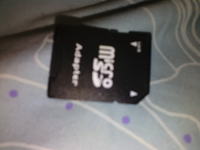bianchi77
Advanced Member level 4

- Joined
- Jun 11, 2009
- Messages
- 1,313
- Helped
- 21
- Reputation
- 44
- Reaction score
- 20
- Trophy points
- 1,318
- Location
- California
- Activity points
- 9,442
Guys,
Can I use the same SDcard for SDIO and SPI ?
Does anyone know which AVR can support SDIO ?
I used STM32 and I saw it's using SDIO...
Any ideas or experiences will be appreciated,
Thanks
Can I use the same SDcard for SDIO and SPI ?
Does anyone know which AVR can support SDIO ?
I used STM32 and I saw it's using SDIO...
Any ideas or experiences will be appreciated,
Thanks


